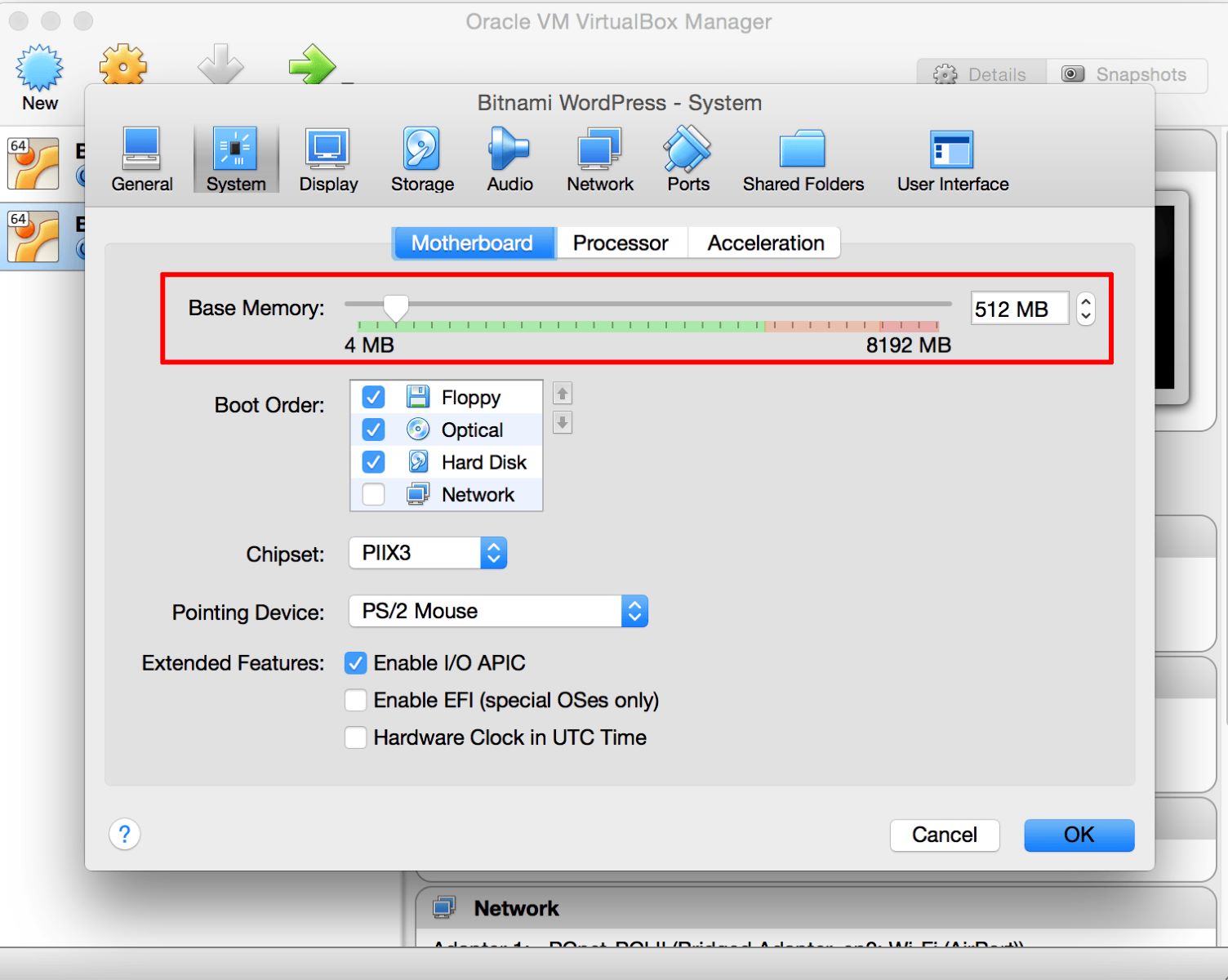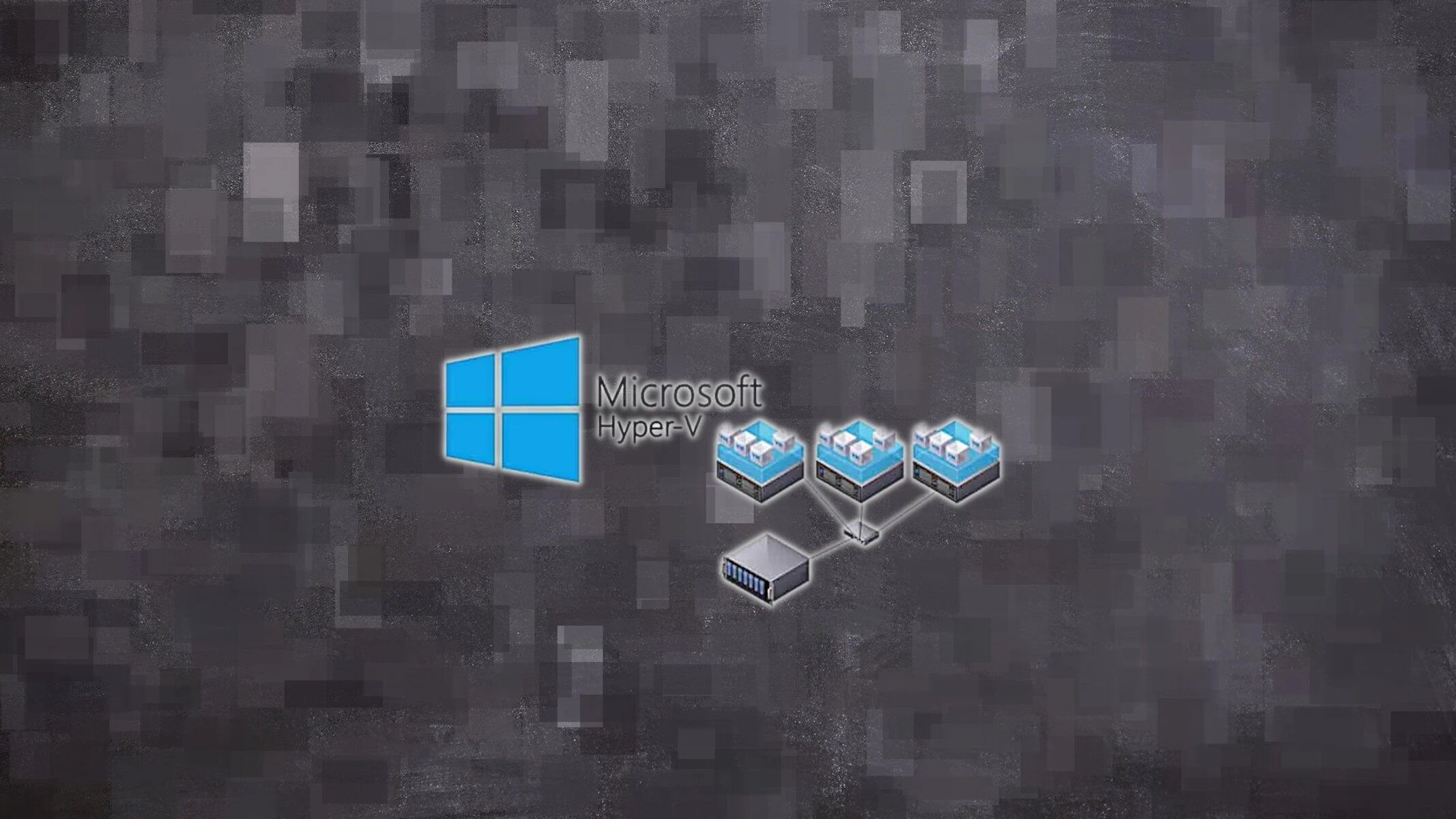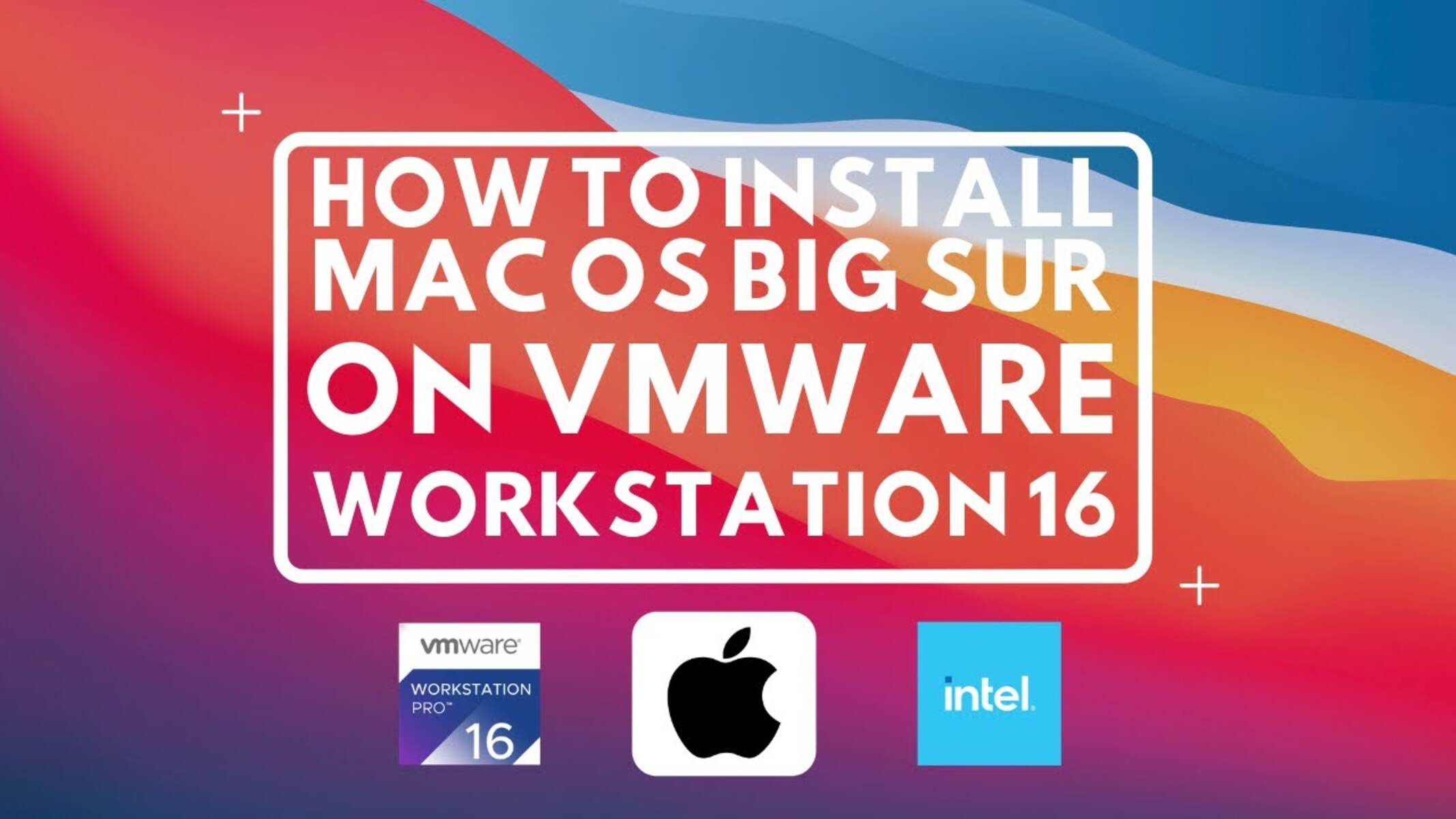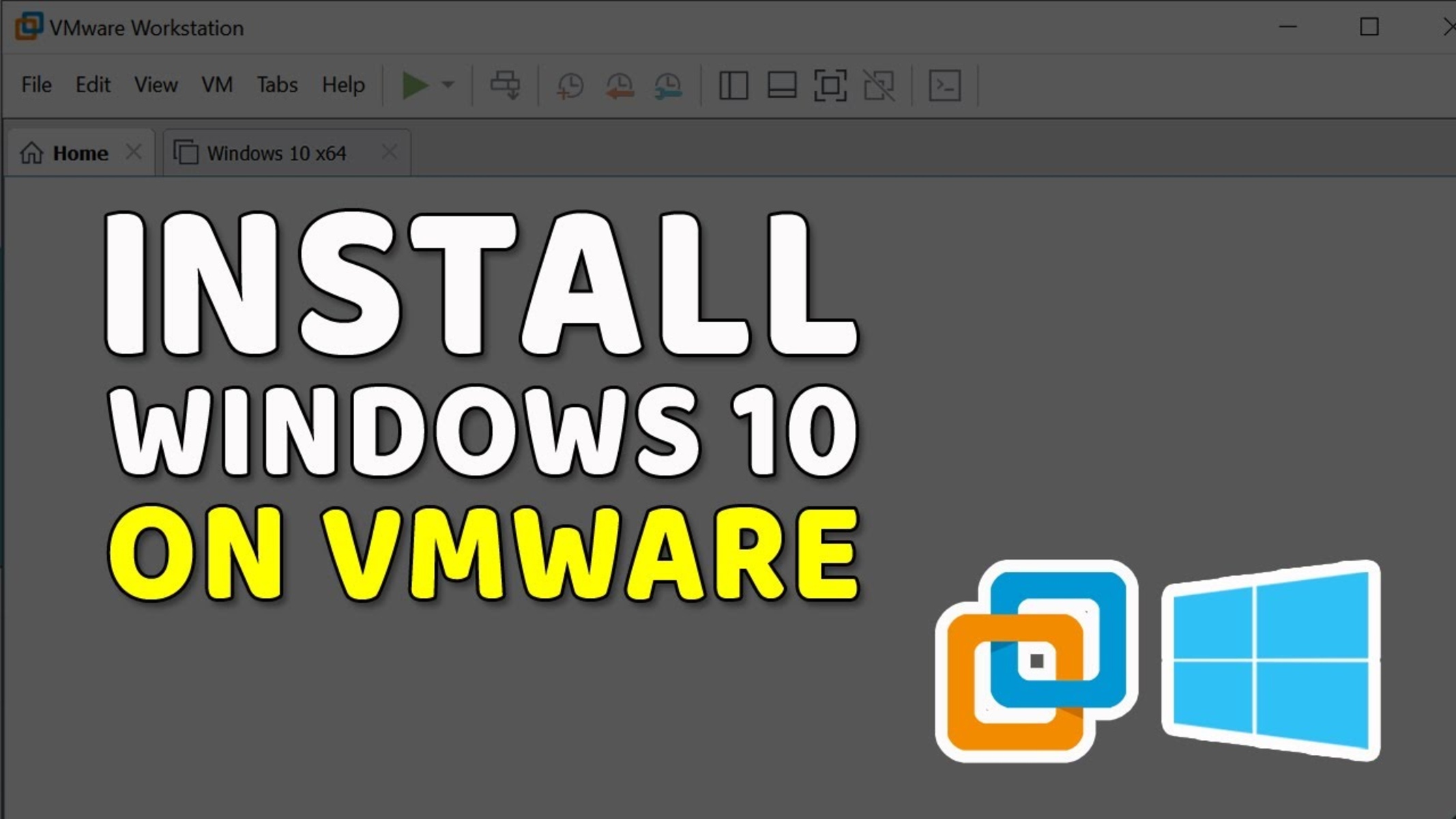Introduction
Adding memory to a VMware virtual machine is a crucial step in optimizing its performance. As virtualization continues to reshape the IT landscape, the demand for efficient memory management is becoming increasingly important. In this guide, we will walk you through the process of adding memory to a VMware virtual machine, ensuring that your system is equipped to handle the workload.
VMware, a leading provider of virtualization technology, offers various tools and platforms to manage virtual machines. By understanding the memory management capabilities of VMware, you can effectively allocate resources and enhance the overall performance of your virtual environment.
Before diving into the technical details, it is essential to assess the memory usage of your virtual machine. By monitoring and analyzing the memory utilization, you can identify whether your virtual machine requires additional memory to meet its operational needs. This helps in preventing performance bottlenecks and ensures smooth operation of applications within the virtual environment.
In this guide, we will cover the step-by-step process of adding memory to a VMware virtual machine using two popular methods: vSphere Web Client and vSphere Client (HTML5). Both methods provide a user-friendly interface to manage virtual machine configuration and can be easily accessed through a web browser.
It is important to note that adding memory to a virtual machine requires shutting it down temporarily. Therefore, it is recommended to schedule this procedure during a maintenance window to minimize disruption to your applications and users. Once the additional memory is allocated and the virtual machine is powered on, you can test its performance to ensure that the new memory configuration is effectively improving its operations.
By following the steps outlined in this guide, you will gain the knowledge and confidence to add memory to your VMware virtual machine, enabling it to handle higher workloads and deliver optimal performance. So, let’s dive in and explore the process of enhancing memory in your VMware virtual machine!
Understanding Memory Management in VMware
Memory management plays a crucial role in the performance and efficiency of virtual machines in the VMware environment. By effectively managing memory resources, you can ensure that your virtual machines have enough allocated memory to operate smoothly without causing performance issues. In this section, we will explore the key concepts of memory management in VMware.
VMware uses a combination of techniques and features to optimize memory utilization. One of the essential components of memory management is the hypervisor’s ability to share memory pages among different virtual machines. This technique, known as Transparent Page Sharing (TPS), identifies identical memory pages across various virtual machines and consolidates them, reducing memory duplication and optimizing memory utilization.
Another important aspect of memory management in VMware is the Balloon Driver. The Balloon Driver is responsible for reclaiming memory from virtual machines when the host system is under memory pressure. It does this by allocating memory within the virtual machine and then releasing it back to the host system when needed. This dynamic allocation ensures that memory resources are utilized efficiently.
VMware also employs memory swapping as a last resort to address memory contention issues. When the demand for memory exceeds the available physical memory, the hypervisor may swap out inactive memory pages to disk, making room for active memory pages to reside in physical memory. While swapping can help manage memory constraints, it can also have a negative impact on overall performance due to the latency involved in disk I/O operations.
To optimize memory utilization, VMware provides techniques such as memory reservation, memory limit, and memory shares. Memory reservation guarantees a specified amount of memory for a virtual machine, ensuring that it always has the necessary resources to operate efficiently. Memory limits restrict the maximum amount of memory a virtual machine can consume, preventing it from monopolizing memory resources. Memory shares, on the other hand, determine the relative priority of memory allocation when contention occurs among virtual machines.
Understanding the memory management mechanisms in VMware is essential for effectively allocating and managing memory resources in your virtual environment. By utilizing the various features and techniques provided by VMware, you can ensure optimal memory utilization and enhance the overall performance of your virtual machines.
Checking Memory Usage of Virtual Machine
Before deciding to add memory to a VMware virtual machine, it is important to assess the current memory usage and determine if additional memory is necessary. By monitoring and analyzing the memory utilization, you can identify if the virtual machine is experiencing memory constraints and needs additional resources to perform optimally.
VMware provides several methods to check the memory usage of a virtual machine. One of the most straightforward approaches is to use the vCenter Server web client or vSphere Client (HTML5) interface. These interfaces offer a comprehensive view of the virtual infrastructure, allowing you to monitor the performance and resource usage of individual virtual machines.
To check the memory usage of a virtual machine using the vSphere web client or vSphere Client (HTML5), follow these steps:
- Launch the vCenter Server web client or vSphere Client (HTML5) and log in to your vCenter Server.
- Navigate to the “Hosts and Clusters” view and locate the virtual machine you want to check.
- Right-click on the virtual machine and select “Summary” from the context menu.
- In the “Summary” tab, you will find the memory usage information, including the assigned memory, consumed memory, and active memory.
The assigned memory represents the amount of memory allocated to the virtual machine. The consumed memory indicates the amount of memory currently in use by the virtual machine. The active memory represents the actively used memory by the virtual machine to run its applications and processes.
Additionally, you can also use performance monitoring tools like vRealize Operations Manager or third-party monitoring solutions to track the memory usage of virtual machines over time. These tools provide detailed insights into memory utilization trends, allowing you to identify patterns and potential memory bottlenecks.
By regularly checking the memory usage of your virtual machine, you can stay informed about its resource requirements and make informed decisions about adding memory when necessary. Understanding the current memory utilization is crucial in ensuring smooth performance and preventing any performance degradation due to memory constraints.
Assessing the Need for Adding Memory
Assessing the need for adding memory to a VMware virtual machine is an important step in optimizing its performance and ensuring smooth operation. By evaluating the current memory utilization and considering factors such as workload requirements and performance bottlenecks, you can determine if additional memory is necessary.
When assessing the need for adding memory, consider the following aspects:
- Memory Utilization: Monitor the memory usage of the virtual machine over a period of time. If the memory utilization regularly reaches or exceeds its allocated capacity, it may indicate a need for additional memory. This can be observed through the vCenter Server web client or vSphere Client (HTML5) interface.
- Application Performance: Evaluate the performance of applications running within the virtual machine. If you notice frequent slowdowns, crashes, or an overall decrease in performance, it could be an indication of memory constraints. Adding more memory can help alleviate these issues and improve application performance.
- Workload Requirements: Consider the nature of the workload running on the virtual machine. If the workload involves resource-intensive tasks such as running databases, virtual desktops, or other memory-intensive applications, it is likely that you will benefit from adding more memory to the virtual machine.
- Growth Projection: Anticipate future growth and scalability needs. If you expect an increase in workload or plan to add more virtual machines to your environment, it is advisable to allocate additional memory to accommodate the growing demand.
It is important to strike a balance between memory allocation and overprovisioning. Overprovisioning, which involves allocating more memory than actually required, can lead to wasted resources and increased costs. Therefore, a careful assessment of the actual needs based on usage patterns and workload requirements is crucial.
By taking into account these factors and regularly evaluating the virtual machine’s memory usage and performance, you can make an informed decision regarding the need for adding memory. This proactive approach ensures that your virtual machine has sufficient resources to handle current and future workloads while maintaining optimal performance.
Prerequisites for Adding Memory to VMware Virtual Machine
Before proceeding with adding memory to a VMware virtual machine, there are a few prerequisites that need to be met. Ensuring that these requirements are fulfilled will help facilitate a smooth and successful memory expansion process.
Here are some prerequisites to consider:
- Permission and Access: Ensure that you have the necessary permissions and access rights to perform operations on the virtual machine. This includes having administrative privileges on the vCenter Server.
- Virtual Machine Compatibility: Verify that the virtual machine is compatible with the version of VMware that you are using. Compatibility issues might arise if the virtual machine was created using a different version or configuration than what is currently supported.
- Sufficient Hardware Resources: Check the hardware resources of the host server where the virtual machine is running. Ensure that there is enough available memory on the host to accommodate the additional memory allocation for the virtual machine.
- Memory Limitations: Take into account the limitations imposed by the operating system and application requirements running inside the virtual machine. Some operating systems may have maximum memory limits, and certain applications may require a specific amount of memory to function optimally.
- Backup and Snapshots: Create a backup of the virtual machine and take snapshots before proceeding with any configuration changes. This serves as a safety net in case any issues arise during the memory expansion process.
- Downtime Window: Plan for a maintenance window or a time when the virtual machine can be safely shut down. Adding memory to a virtual machine requires temporarily powering it off to apply the new memory configuration.
It is essential to carefully review and meet these prerequisites to ensure a smooth and successful memory expansion process. By doing so, you minimize the chances of encountering compatibility issues, resource constraints, or any unexpected complications during the memory allocation procedure.
Once you have verified that all the prerequisites are in place, you can proceed with the actual steps to add memory to your VMware virtual machine, as outlined in the following sections of this guide.
Shutting Down the Virtual Machine
Before adding memory to a VMware virtual machine, it is necessary to shut down the virtual machine temporarily. This ensures that the memory expansion process can be performed safely and without disrupting the virtual machine’s operations. Here are the steps to shut down a virtual machine:
- Verify Virtual Machine Power State: Ensure that the virtual machine is powered on and in a running state before proceeding with the shutdown. You can check the power state of the virtual machine using the vCenter Server web client or vSphere Client (HTML5) interface.
- Select the Virtual Machine: Locate the virtual machine you wish to shut down, and right-click on it to bring up the context menu.
- Choose “Power” Option: From the context menu, select the “Power” option, which will display additional power-related options.
- Select “Shut Down Guest Operating System”: Choose the “Shut Down Guest Operating System” option to initiate the shutdown process. This will send a signal to the virtual machine’s operating system to gracefully shut down all running processes and applications.
- Monitor the Shutdown Process: Monitor the virtual machine’s status to ensure that it shuts down completely. You can view the progress in the vCenter Server web client or vSphere Client (HTML5) interface.
- Confirm Virtual Machine Shutdown: Once the virtual machine has successfully shut down, you can confirm its power state to ensure that it is powered off.
It is important to note that shutting down the virtual machine will result in a temporary interruption of service. Therefore, it is recommended to schedule this procedure during a maintenance window or at a time when the impact on users and applications is minimal.
By following these steps to shut down your virtual machine before adding memory, you ensure proper preparation for the memory expansion process. This helps to prevent data corruption, maintain system stability, and facilitate a smooth transition to the updated memory configuration.
Increasing Memory with vSphere Web Client
The vSphere Web Client provides a user-friendly interface for managing virtual machine configurations, including expanding memory allocation. Here’s a step-by-step guide on how to increase memory using the vSphere Web Client:
- Launch the vSphere Web Client: Open a web browser and enter the URL for the vSphere Web Client. Log in with your credentials to access the vCenter Server.
- Navigate to the Virtual Machine: In the vSphere Web Client, navigate to the “Hosts and Clusters” view and locate the virtual machine for which you want to increase the memory.
- Power off the Virtual Machine: Ensure that the virtual machine is powered off before proceeding with the memory expansion. You can right-click on the virtual machine, select “Power,” and choose “Power Off” from the context menu.
- Select the Virtual Machine: Right-click on the virtual machine and select “Edit Settings” from the context menu. This will open the virtual machine settings window.
- Modify Memory Allocation: In the virtual machine settings window, navigate to the “Hardware” tab and select “Memory.” Specify the new memory allocation by adjusting the slider or manually entering the desired value. Ensure that the value is within the memory limits of the host server.
- Save the Changes: Once you have adjusted the memory allocation, click “OK” to save the changes.
- Power On the Virtual Machine: Now that the memory has been increased, you can power on the virtual machine. Right-click on the virtual machine and select “Power On” from the context menu.
After following these steps, the virtual machine will power on with the newly allocated memory. It is important to monitor the virtual machine’s performance to ensure that the increased memory is effectively improving its operations.
Using the vSphere Web Client offers a straightforward approach to expanding memory for your VMware virtual machine. This intuitive interface simplifies the configuration process and allows for seamless management of memory resources.
Increasing Memory with vSphere Client (HTML5)
The vSphere Client (HTML5) is another user-friendly interface that allows you to manage virtual machine configurations, including increasing memory allocation. Follow these steps to expand memory using the vSphere Client (HTML5):
- Launch the vSphere Client (HTML5): Open a web browser and enter the URL for the vSphere Client (HTML5). Log in with your credentials to access the vCenter Server.
- Navigate to the Virtual Machine: In the vSphere Client (HTML5), navigate to the “Hosts and Clusters” view and locate the virtual machine to which you want to add memory.
- Power off the Virtual Machine: Ensure that the virtual machine is powered off before proceeding with the memory expansion. Right-click on the virtual machine and select “Power” from the context menu. Choose “Power Off” to shut down the virtual machine.
- Select the Virtual Machine: Right-click on the virtual machine and select “Edit Settings” from the context menu. This will open the virtual machine settings window.
- Modify Memory Allocation: In the virtual machine settings window, navigate to the “Virtual Hardware” tab and select “Memory.” Adjust the memory allocation by using the slider or manually entering the desired value. Ensure that the allocated memory is within the limits of the host server.
- Save the Changes: Once you have adjusted the memory allocation, click “OK” to save the changes.
- Power On the Virtual Machine: With the memory increased, you can now power on the virtual machine. Right-click on the virtual machine and select “Power” from the context menu. Choose “Power On” to start the virtual machine.
Upon completion of these steps, the virtual machine will boot with the newly allocated memory. It is important to monitor the performance of the virtual machine to confirm that the increased memory is effectively enhancing its operations.
The vSphere Client (HTML5) provides a user-friendly interface for expanding memory in your VMware virtual machine. With its intuitive layout and functionality, you can easily manage memory allocation and optimize the performance of your virtual environment.
Verifying Memory Configuration
After adding memory to a VMware virtual machine, it is crucial to verify the memory configuration to ensure that the intended changes have been successfully implemented. By verifying the memory configuration, you can confirm that the virtual machine has the allocated memory available for use. Here are the steps to verify the memory configuration:
- Launch the vSphere Web Client or vSphere Client (HTML5): Open a web browser and access the vSphere Web Client or the vSphere Client (HTML5) interface.
- Navigate to the Virtual Machine: In the virtual infrastructure view, locate the virtual machine for which you increased the memory.
- Review Virtual Machine Summary: Right-click on the virtual machine and select “Summary” from the context menu. This will display the summary page providing details about the virtual machine.
- Confirm Memory Allocation: On the summary page, verify that the assigned memory matches the newly allocated memory. This will confirm that the memory change has been applied successfully.
Additionally, you can also monitor the memory usage of the virtual machine over time to ensure that it is operating within the expected parameters. This can be done using performance monitoring tools or through the vCenter Server web client or vSphere Client (HTML5).
Verifying the memory configuration is an essential step to confirm that the added memory is available to the virtual machine. This ensures that the virtual machine is properly equipped to handle the workload and that the memory allocation change has been successfully implemented.
Powering On the Virtual Machine
After adding memory to a VMware virtual machine and verifying the memory configuration, the next step is to power on the virtual machine. This allows the virtual machine to utilize the newly allocated memory and resume its operations. Here are the steps to power on the virtual machine:
- Launch the vSphere Web Client or vSphere Client (HTML5): Open a web browser and access the vSphere Web Client or the vSphere Client (HTML5) interface.
- Navigate to the Virtual Machine: In the virtual infrastructure view, locate the virtual machine for which you increased the memory.
- Power On the Virtual Machine: Right-click on the virtual machine and select “Power” from the context menu. Choose “Power On” to start the virtual machine.
- Monitor the Power-On Process: Observe the virtual machine’s status to ensure that it powers on correctly. You can check the progress in the vCenter Server web client or vSphere Client (HTML5) interface.
- Confirm Virtual Machine Power State: Once the virtual machine has successfully powered on, verify its power state to ensure that it is running.
After the virtual machine is powered on, it will utilize the newly allocated memory to run its applications and processes. It is important to monitor the virtual machine’s performance and ensure that the added memory is effectively improving its operations.
Powering on the virtual machine completes the memory expansion process, and the virtual machine is now equipped with the additional memory to meet its operational needs.
Testing the Added Memory
After adding memory to a VMware virtual machine and powering it on, it is essential to test the impact of the additional memory on the virtual machine’s performance. Testing helps ensure that the added memory is effectively utilized and improves the overall operations of the virtual machine. Here are some steps to guide you in testing the added memory:
- Monitor Performance Metrics: Use performance monitoring tools or the vCenter Server web client to monitor key performance metrics of the virtual machine, such as CPU usage, memory utilization, disk I/O, and network throughput.
- Observe Application Performance: Assess the performance of applications and workloads running within the virtual machine. Check for any improvements in responsiveness, reduced latency, or faster execution times. See if any previous performance bottlenecks have been alleviated by the additional memory.
- Stress Testing: Conduct stress tests or performance benchmarks to simulate high-demand scenarios and evaluate the virtual machine’s capability to handle increased workloads. This can help identify any performance limitations or potential issues that may arise under heavy usage.
- Load Testing: If applicable, perform load testing by injecting simulated user or network traffic to evaluate how the virtual machine performs under various loads. Assess if the added memory has improved the virtual machine’s ability to handle concurrent requests and maintain satisfactory response times.
- Compare Metrics Before and After: Compare performance metrics recorded before and after adding memory to observe any significant changes. Look for improvements in resource utilization, reduced swapping, and overall system stability.
By conducting thorough tests, you can ensure that the added memory has positively impacted the performance and operations of the virtual machine. If any issues or suboptimal results are observed during testing, necessary adjustments or optimizations can be made to further enhance the virtual machine’s performance.
Regularly monitoring and testing the virtual machine’s performance after adding memory is essential to ensure that it continues to meet the requirements of the workload and perform optimally in the VMware environment.
Conclusion
Adding memory to a VMware virtual machine is a crucial step in optimizing its performance and ensuring smooth operations. By following the steps outlined in this guide and considering factors such as memory utilization, workload requirements, and performance bottlenecks, you can confidently expand the memory of your virtual machine and enhance its overall performance.
Understanding memory management in VMware is essential as it allows you to make informed decisions about allocating memory resources efficiently. By leveraging features such as Transparent Page Sharing (TPS), the Balloon Driver, and memory swapping, you can effectively optimize memory utilization within your virtual environment.
Before proceeding with memory expansion, it is important to assess the need for additional memory by monitoring memory usage and evaluating application performance. This ensures that memory constraints are addressed and that the virtual machine has sufficient resources to handle its workload.
When adding memory to a virtual machine, it is crucial to meet the necessary prerequisites, such as having sufficient hardware resources, permissions, and understanding any limitations imposed by the operating system or applications. Additionally, scheduling a maintenance window to shut down the virtual machine and carefully following the steps for increasing memory with either vSphere Web Client or vSphere Client (HTML5) will ensure a smooth and successful memory expansion process.
After adding memory, it is important to verify the memory configuration to confirm that the changes have been applied correctly. Finally, by testing the added memory through performance monitoring, application assessment, stress testing, and load testing, you can ensure that the virtual machine is effectively utilizing the additional memory and delivering improved performance.
By following best practices and regularly monitoring the performance of your virtual machine, you can maintain an optimized memory configuration and adapt to changing workload requirements. With the increased memory, your VMware virtual machine will be better equipped to handle resource-intensive applications, improve responsiveness, and deliver an enhanced user experience.

























